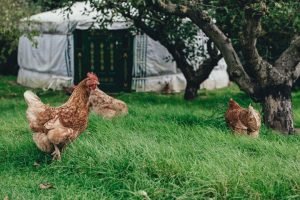Selective breeding is one way of ensuring a farmer achieves efficiency in their farming of both livestock and crops to increase their source of income. Selective breeding has limitations, and the farmer must weigh the options before engaging. Selective breeding is about choosing parents with particular characteristics to breed and develop particular genetic traits. Some of the pros and cons of selective breeding are discussed below.
Pros of selective breeding
1. Free of charge
Selective breeding can be performed on plants and animals and is mainly conducted for business. Selective breeding is free, and one needs to be equipped with the proper knowledge to attain the best results.
2. Higher yields.
Selective breeding provides higher yields and higher amounts of crops resistant to pests and diseases and has a short span for their growth and harvest period.
3. No company patents
Selective breeding has no limits, and the farmer can start the process anytime whenever they want to. It is a natural way for farmers to earn more profits as it allows them to breed the particular characteristics of the animals and plants, making them more productive.
4. Higher profits
This agricultural method allows the farmer to breed the characteristics that are more to their liking and advantageous for the farmer. The genes can now be passed off from their typical breeds, and these advantages increase the market value of the products.
5. Eliminate diseases
Selective breeding helps farmers to eliminate animal and plant diseases. Prescreening and identifying certain diseases would allow complete control and eliminate such diseases later.
6. Quality products
Selective breeding offers superior products to help the farmers produce higher-quality products.
7. Sustainable food chain
Selective breeding helps the country to plan a food chain system that would support the expected increase in population. This method will allow the world to be fed efficiently, eliminating hunger.
8. Supports life infrastructure
Selective breeding does not pose risks to the bees and the rest of the pollinators. The processes are natural; human creative interferences do not affect life support.
Cons of selective breeding
1. Lack of variety
Selective breeding could create a variety of species but could also drive important species to extinction. One example is the Narragansets Pace, a horse species that have undergone selective breeding, leading to its extinction.
2. Occurrence of genetic mutations
Selective breeding increases the chance of preferred traits but could also lead to the inheritance of poor traits. There is the occurrence of genetic mutations, which could lead to the process not being viable.
3. It Is more about humans only.
Selective breeding could cause plants and animals to develop bodies and structures that cannot support the desired traits. The plant or animal may produce more quality traits preferred by the human conception, but the animal’s quality of life would be reduced.
4. No guarantee of desired traits
In selective breeding, there is a guarantee that the process to be ineffective for a generation and could cause the desired traits to be inaccessible for future generations.



